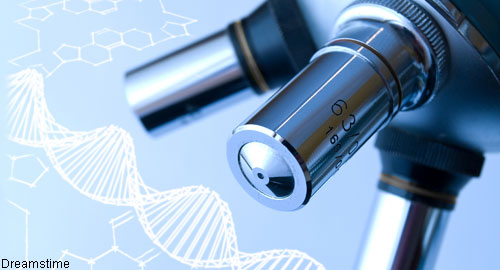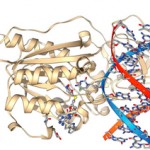 Patients with rheumatoid arthritis (RA) possess an immune system that attacks the joints, causing inflammation, pain and, eventually, tissue destruction. RA can be either seropositive or seronegative, with seropositive RA patients often presenting with more severe symptoms. Although rheumatologists assume pathological cellular immune responses occur in patients with seropositive RA, they have, until now, lacked a cellular marker that distinguishes between seropositive and seronegative populations.
Patients with rheumatoid arthritis (RA) possess an immune system that attacks the joints, causing inflammation, pain and, eventually, tissue destruction. RA can be either seropositive or seronegative, with seropositive RA patients often presenting with more severe symptoms. Although rheumatologists assume pathological cellular immune responses occur in patients with seropositive RA, they have, until now, lacked a cellular marker that distinguishes between seropositive and seronegative populations.
This month, Deepak A. Rao, MD, PhD, co-director of the Human Immunology Center at Brigham and Women’s Hospital (BWH) in Boston, and colleagues published their description of a newly identified subset of T cells, named peripheral helper (TPH) cells. These cells appear to work within the inflamed non-lymphoid tissues of patients with seropositive RA to promote pathological B cell responses and antibody production. The investigators used mass cytometry and RNA sequencing to perform a detailed analysis of this small population of cells found in the synovium of patients with seropositive RA. They published their results in the Feb. 2 issue of Nature.¹
Their transcriptome analysis revealed a population of PD-1hiCXCR5–CD4+ T cells (TPH) that had expanded in the joints of patients with seropositive RA. PD-1 is well known as an inhibitory receptor; although these cells expressed high levels of PD-1, they are not exhausted. Rather, the cells expressed factors that enable B cell help, including IL-21, CXCL13, ICOS and MAF.
“We’ve known for a long time that T cells and B cells infiltrate the synovium and contribute to inflammation in the joint,” explains Dr. Rao in an email to The Rheumatologist. “This study identifies a large population of T cells in the synovium that appears to drive the B cell response in the joint. Discovery of this population may allow us to develop new therapies that specifically target this pathologic T cell population, while sparing other protective T cells.”
TPH Cells in the Synovium
The TPH cells represent approximately one-quarter of the helper T cells found in RA joints. The researchers explain that the TPH cells are similar to PD-1hiCXCR5+ T follicular helper cells in that they induce plasma cell differentiation in vitro via IL-21 excretion and SLAMF5 interaction. A closer analysis of the transcriptome of the novel TPH population revealed, however, that TPH and T follicular helper cells differ in expression of BCL6 and BLIMP1.
“There’s a general sense among rheumatologists that seropositive RA behaves differently from seronegative RA,” elaborates Dr. Rao. “The specific enrichment of TPH cells in seropositive RA samples and not other inflammatory arthritides (i.e., seronegative RA, psoriatic arthritis, juvenile arthritis) is really striking.”
TPH cells are also unique in that they express chemokine receptors, such as CCR2, CXCR1 and CCR5, which direct migration to inflamed sites. Thus, the newly identified T cell population is able to infiltrate parts of the body that are inflamed and stimulate B cells to produce antibodies. In particular, the investigators found that PD-1hiCXCR5–CD4+ T cells that had been sorted from the synovial tissue or fluid of patients with RA could induce differentiation of co-cultured memory B cells into plasma cells. In contrast, CXCR5– cells that did not have high PD-1 expression could not stimulate a B cell response.
The fact that TPH cells are uniquely enriched in seropositive RA implies that they are critical for the T cell-B cell interactions that are characteristic of seropositive disease. “Our results help illuminate a path toward treatment that is much more precise and focused only on the most relevant immune cells,” said Dr. Rao in a press release.
To that end, the investigators intend to focus their future research on developing a better understanding of the signals required to develop TPH cells, as well as the role these cells may play in other autoimmune diseases. Such studies may reveal whether the presence of TPH cells may be a useful diagnostic biomarker or, alternatively, a predictive biomarker that can be used to identify which patients are most likely to respond to therapies, such as rituximab, that directly target T cell-B cell interactions.
“This work is a remarkable illustration of the power of our disease deconstruction approach,” says senior author Michael B. Brenner, MD, who also directs BWH’s Human Immunology Center with Dr. Rao, in a press release. “We hope it will prove equally illuminating as we apply it to other immune-mediated diseases.”
Lara C. Pullen, PhD, is a medical writer based in the Chicago area.
Reference
- Rao DA, Gurish MF, Marshall JL, et al. Pathologically expanded peripheral T helper cell subset drives B cells in rheumatoid arthritis. Nature. 2017 Feb 1;542(7639):110–114. doi: 10.1038/nature20810.

